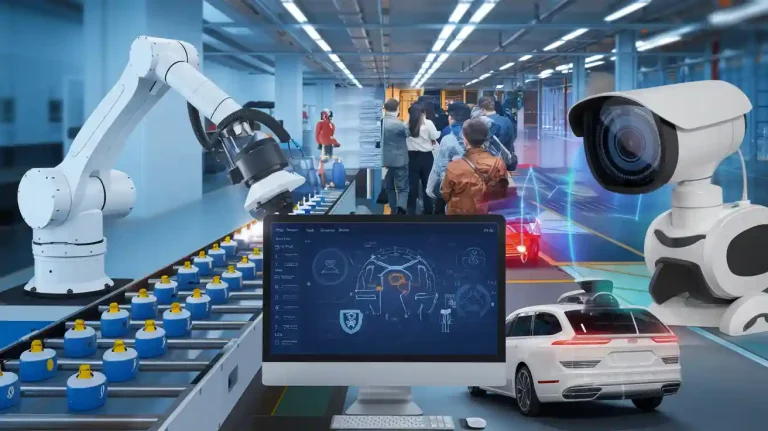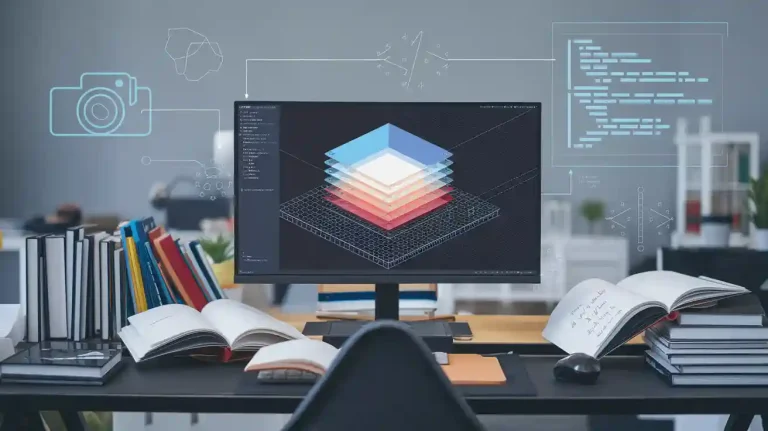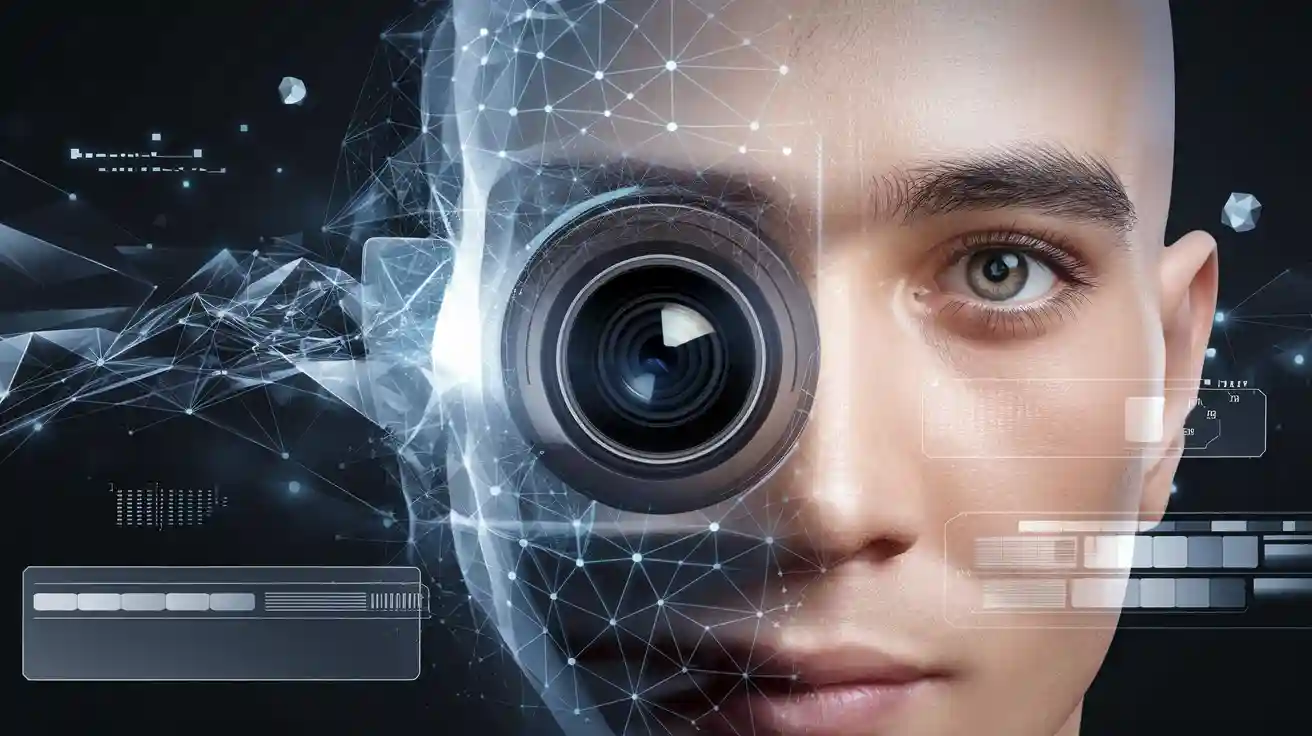
A convolutional neural networks (CNNs) machine vision system uses deep learning to help computers see and understand images. This system relies on a convolutional neural network, a type of deep learning model that can find patterns in visual data. CNNs have changed computer vision by making image classification and object detection more accurate. Many models, such as AlexNet and ResNet, show how CNNs improve results in tasks like medical imaging and autonomous driving. These deep learning systems use layers to learn features, making them vital in computer vision and machine learning applications.
Key Takeaways
- CNNs use layers to automatically learn important features from images, making them powerful for tasks like object detection and classification.
- These networks improve accuracy and efficiency compared to older methods by handling complex patterns without manual feature selection.
- CNNs have many real-world uses, including medical imaging, facial recognition, self-driving cars, and quality control in factories.
- Popular CNN models like ResNet and AlexNet offer different strengths, balancing accuracy and speed for various applications.
- Beginners can start learning CNNs by preparing data, building layered models, and using resources like online courses and libraries such as TensorFlow.
Convolutional Neural Networks (CNNs) Machine Vision System
What Is a Convolutional Neural Network?
A convolutional neural network is a type of deep learning algorithm designed to process visual data. This network uses layers that work together to find patterns in images. Each layer has a special job. The first layers use filters, called kernels, to scan the image and pick out simple features like edges or shapes. These features help the network understand what is in the picture.
The network then uses pooling layers to make the feature maps smaller. This step helps the network focus on the most important parts of the image and ignore small changes in position. Activation functions, such as ReLU, add non-linearity, which means the network can learn more complex patterns. At the end, fully connected layers take all the features and make a final decision, like naming the object in the image.
This layered structure mimics how the human brain processes visual information. The network starts with simple features and builds up to more complex ideas.
Here is a table that shows the main parts of a convolutional neural networks (cnns) machine vision system and how they work together:
| Component | Role/Function | Interaction with Other Components |
|---|---|---|
| Convolutional Layers | Apply filters to input images to extract local features such as edges and shapes. | Pass extracted features to activation functions; form the first step in hierarchical feature extraction. |
| Activation Functions (ReLU) | Introduce non-linearity by zeroing out negative values, enabling the network to learn complex patterns. | Receive feature maps from convolutional layers and transform them before pooling layers. |
| Pooling Layers | Reduce spatial dimensions and provide translation invariance, improving robustness. | Downsample activated feature maps, reducing dimensionality and memory usage, enabling deeper networks. |
| Fully Connected Layers | Integrate extracted features to perform classification or other decision-making tasks. | Combine all features from previous layers to produce final output such as class probabilities. |
A convolutional neural networks (cnns) machine vision system uses these parts to process images step by step. The network learns to recognize objects by training on many examples. Deep learning models like these have become the foundation of modern computer vision.
Why CNNs Matter in Machine Vision
Convolutional neural networks have changed the way computers see and understand images. Before deep learning, traditional machine learning methods needed people to pick out features by hand. These old methods often missed important details and did not work well for complex images.
CNNs solve this problem by learning features automatically. They can handle many image recognition tasks, such as facial recognition, object detection, and image classification. Deep learning algorithms like CNNs outperform older rule-based systems and feature-engineered machine learning models. For example, in medical imaging, CNNs can classify images with high accuracy, even when trained on small labeled datasets. These networks also help automate the annotation of large sets of images, making it easier to analyze data at scale.
- CNN-based deep learning models do not need manual feature engineering.
- They achieve higher accuracy than traditional machine learning models.
- CNNs adapt to new tasks quickly and work well across different fields, such as healthcare and transportation.
- Improvements in CNN architecture, like using 1×1 convolutions and adaptive dropout, make networks more efficient and accurate.
Many people think that deeper CNNs always work better or that they are perfectly shift-invariant. These ideas are not true. Building efficient and robust networks requires understanding their real strengths and limits.
Deep learning has made computer vision possible for many real-world applications. A convolutional neural networks (cnns) machine vision system now powers self-driving cars, medical diagnosis tools, and security systems. These networks continue to push the boundaries of what computers can see and understand.
CNN Architecture
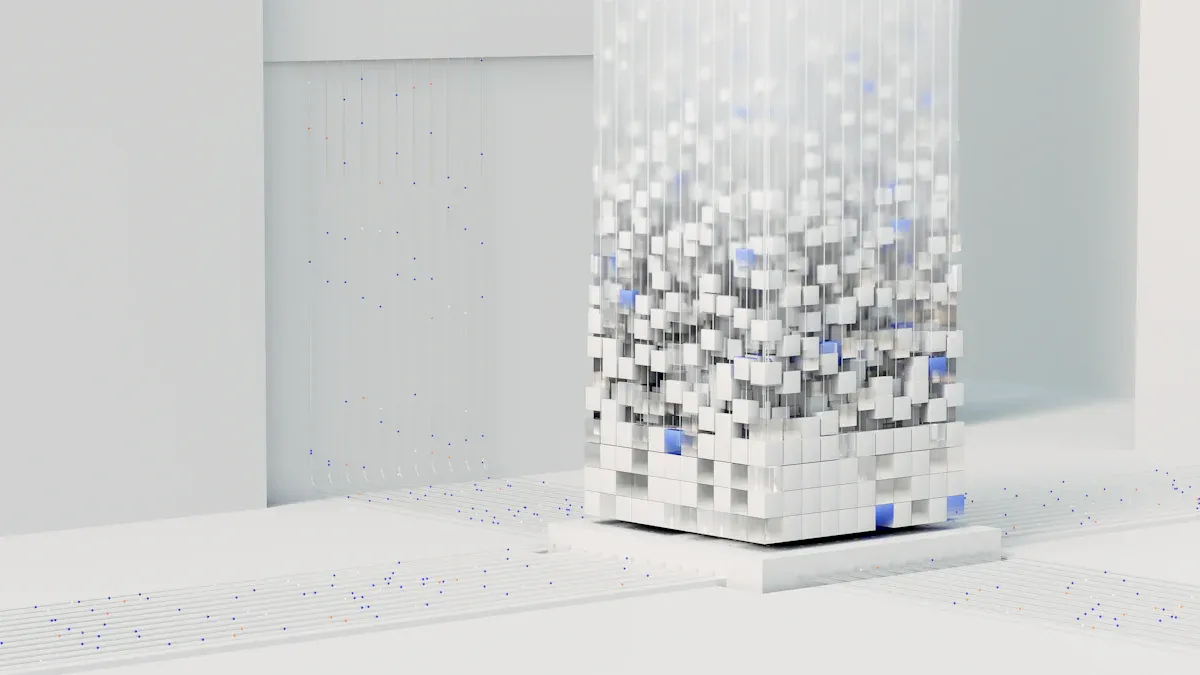
Convolutional neural networks use a special structure to process images and other grid-like data. Each part of the network has a unique job in deep learning and image processing. These parts work together to help the network learn from data and make accurate predictions.
Convolutional Layers
Convolutional layers form the core of most cnn architectures. These layers use filters, also called kernels, to scan across the input image. The mathematical operation behind this process is called convolution. The filter slides over the image and multiplies its values with the input, then adds a bias. This step helps the network find patterns like edges or shapes. Convolutional layers use fewer parameters than fully connected layers because they share weights and only connect to small regions of the input. This design makes deep learning models efficient and powerful for image processing tasks.
Convolutional layers allow cnns to learn important features directly from raw images, making them a key part of deep learning.
Pooling Layers
Pooling layers help reduce the size of the feature maps created by convolutional layers. They do this by taking small regions of the feature map and keeping only the most important value, often using a method called max pooling. For example, a 2×2 max pooling layer looks at four numbers and keeps the largest one. This step makes the network faster and helps prevent overfitting by removing less useful details. Pooling layers also help cnns focus on the most important features in an image, which is very useful in deep learning and image processing.
Activation Layers
Activation layers add non-linearity to the network. The most common activation function in cnns is ReLU, which turns all negative numbers into zero. This step helps the network learn complex patterns and speeds up training. Other activation functions, like Leaky ReLU or Softmax, are used for special tasks. Activation layers make deep learning models more flexible and help them solve harder problems.
| Activation Function | Usage in CNNs | Advantages |
|---|---|---|
| ReLU | Most hidden layers | Fast, avoids vanishing gradient, leads to better performance |
| Leaky ReLU | Hidden layers | Allows small gradients for negative inputs, improves stability |
| Softmax | Output layer for multi-class classification | Converts outputs to probabilities |
Fully Connected Layers
Fully connected layers come at the end of the network. They take all the features found by earlier layers and combine them to make a final decision, such as classifying an image. Each neuron in a fully connected layer connects to every neuron in the previous layer. This setup lets the network learn complex relationships between features. In deep learning, fully connected layers turn the learned features into predictions, making them essential for tasks like image classification.
Each part of cnns works together to process images step by step. This teamwork allows deep learning models to handle complex image processing tasks with high accuracy.
Training Convolutional Neural Networks
Data Preparation
Preparing data is a key step before training a cnn. For image tasks, data must be in a format that cnns can process. Images often need resizing to a fixed shape, such as 28×28 pixels, so the network can handle them correctly. Consistent input shapes help cnns learn better. Visualizing images and labels helps confirm that preprocessing steps work as expected. Data augmentation, like flipping or rotating images, increases the variety of training samples and helps deep learning models generalize.
Some important data preprocessing steps include:
- Encoding non-numerical data into numbers, since machine learning models need numerical inputs.
- Scaling features so all values are on similar scales, using methods like Min-Max or Standard scaling.
- Splitting the dataset into training, validation, and test sets to check how well the cnn learns.
- Transforming data to improve model performance and reduce bias.
- Creating new features or changing existing ones using domain knowledge.
- Handling imbalanced data by oversampling or undersampling to avoid bias toward one class.
Loss Functions and Optimization
Loss functions guide deep learning models during training. They measure how far the model’s predictions are from the true answers. For classification tasks, cross-entropy loss is the most common choice. It compares the predicted probabilities with the actual labels and helps cnns learn to make better predictions. AlexNet, a famous cnn, used cross-entropy loss to achieve high accuracy on large datasets.
For regression tasks, mean squared error is often used. Some tasks, like image segmentation, may use other loss functions. The choice depends on the problem the cnn is solving.
Optimization algorithms help cnns find the best weights. Techniques like Inverse Binary Optimization (IBO) and Non-Dominated Sorted Genetic Algorithm-II (NSGA-II) have shown strong results. These methods help deep learning models converge faster and avoid overfitting. Some optimization methods, like the Grasshopper Optimization Technique, balance accuracy and resource use, making them practical for real-world deep learning applications.
Evaluation Metrics
Evaluating a cnn’s performance requires clear metrics. Accuracy measures how often the model predicts correctly. Precision and recall show how well the model finds true positives and avoids false alarms. The F1-score combines precision and recall into one number. For some tasks, the Area Under the ROC Curve (AUC) shows how well the model separates classes.
| Evaluation Metric | Purpose | Preferred Value |
|---|---|---|
| Accuracy | Overall correctness | High (close to 1) |
| Precision | Correct positive predictions | High |
| Recall | Finds actual positives | High |
| F1-Score | Balance of precision and recall | High |
| AUC | Distinguishes between classes | High |
Balanced accuracy, macro precision, and macro recall are also useful, especially for imbalanced datasets. In deep learning, these metrics help compare different cnns and guide improvements during training a cnn.
Applications of CNNs
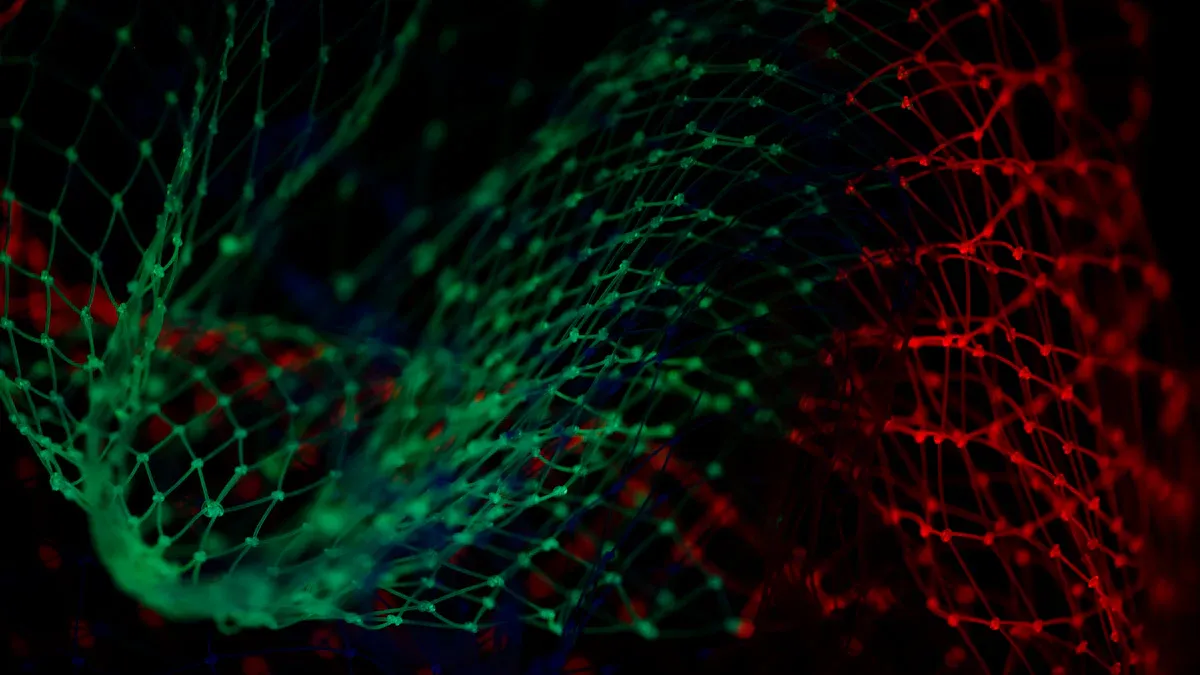
Image Classification and Recognition
CNNs have changed how computers perform image classification and object recognition. These deep learning models can sort images into categories and identify objects with high accuracy. In medical imaging, CNNs help doctors find diseases in MRIs, X-rays, and CT scans. They often reach over 90% accuracy, sometimes even surpassing human experts. Facial recognition systems use CNNs to identify people in security and social media platforms. Retailers use image classification to recommend products and manage inventory.
| Application Domain | Description and Impact |
|---|---|
| Medical Imaging | CNNs enable fast, accurate diagnostics in scans, improving patient outcomes. |
| Facial Recognition | Used in security and content curation, enabling real-time identification. |
| Retail and E-commerce | Analyzes product images, automates sorting, and enhances shopping experiences. |
These examples show how CNNs support many AI applications in computer vision.
Object Detection and Segmentation
Object detection and image segmentation allow computers to find and outline objects in pictures and videos. CNNs power many detection systems in real-world AI applications. Models like YOLO and SSD detect objects quickly and accurately. CenterNet and EfficientDet improve detection by merging features from different layers. For image segmentation, networks like UNet and DeepLab divide images into regions, helping with tasks such as medical diagnosis and environmental monitoring.
An enhanced CNN model can combine multi-scale features, improving detection of objects at different sizes. On the Cityscapes dataset, such models reach 99.6% segmentation accuracy and keep 97.3% accuracy even with noise. These results show that optimizing network structure leads to high accuracy in object detection and segmentation.
CNNs extract deep features, fuse multi-scale information, and achieve high accuracy in detection tasks across computer vision.
Industry Use Cases
Many industries use CNNs for AI applications. Search engines and social media rely on image classification for content sorting. Face recognition supports entertainment and identification systems. Optical character recognition helps banks and insurance companies digitize documents. Healthcare uses CNNs for medical image computing and predictive analytics. Manufacturing depends on CNNs for defect detection and quality control. Retailers use CNNs for inventory management and automation. Augmented reality and precision medicine also benefit from these deep learning models.
- Quality control and defect detection in factories
- Automated document analysis in banking
- Predictive analytics in healthcare
- Enhanced visual experiences in augmented reality
CNNs continue to drive innovation in computer vision and AI applications, making processes faster and more reliable.
CNN Models and Limitations
Popular CNN Models
Many cnn models have shaped the field of computer vision. Each model brings unique strengths for tasks like image classification and detection. The table below highlights some of the most popular cnn models and their performance on a melanoma detection benchmark:
| CNN Model | Key Features & Architecture Highlights | Benchmarking Highlights (Melanoma Dataset) |
|---|---|---|
| ResNet (18, 50, 101) | Uses residual connections; ResNet50 balances depth and efficiency | ResNet101 achieves best accuracy |
| DenseNet201 | Concatenates outputs of previous layers | Highest sensitivity and F1-score; lowest false negative rate |
| InceptionV1, V3 | Stacks inception modules; InceptionV3 uses RMSProp optimizer | InceptionV3 has highest precision and specificity |
| InceptionResNetV2 | Combines inception modules with residual connections | State-of-the-art accuracy |
| VGG16/19 | Simple design with many parameters | Moderate accuracy; complex network |
| AlexNet | Early deep cnn model; uses large filters and ReLU activations | Baseline model |
| SqueezeNet, MobileNetv2, EfficientNetB0 | Lightweight, efficient architectures | SqueezeNet is lightest but with moderate accuracy |
These cnn models have set benchmarks in detection and classification tasks, showing trade-offs between accuracy and efficiency.
Advantages of CNNs
CNNs offer several advantages over traditional machine learning models for vision tasks:
- They automatically learn features from raw data, removing the need for manual feature engineering.
- Shared weights reduce the number of parameters, making cnn models more efficient.
- CNNs recognize patterns anywhere in an image, which helps with detection tasks.
- They capture both simple and complex features, improving accuracy in real-world applications.
- CNNs work well with images, audio, video, and text, making them versatile for many computer vision problems.
This layered approach allows cnn models to handle detection and classification with high accuracy and robustness.
Limitations and Challenges
Deploying cnn models in production brings challenges:
- Scalability issues can arise as data or user numbers grow.
- Real-time detection may face latency problems.
- Data drift can lower model performance over time.
- Hardware limits can restrict use on low-power devices.
- Security risks, such as adversarial attacks, threaten reliability.
To address these, developers use strategies like quantization, pruning, and lightweight architectures. Continuous monitoring and robust testing help maintain performance. Security measures and hybrid cloud-edge deployment also support safe and efficient cnn model use.
Tip: Data augmentation, batch normalization, and dropout can improve cnn model accuracy and reduce overfitting.
Getting Started with CNNs
Beginners can start learning about cnn models using several resources:
- Adit Deshpande’s beginner guide explains cnn concepts visually and mathematically.
- Stanford’s CS231N course covers deep learning and computer vision in detail.
- Michael Nielsen’s book "Neural Networks and Deep Learning" builds foundational knowledge.
- Andrew Ng’s Deep Learning Specialization offers structured lessons, starting from basics.
- Learning Python and using Jupyter Notebooks is important for practical work.
- MathWorks provides MATLAB resources for those who prefer not to use Python.
To build a simple cnn model for image analysis, follow these steps:
- Install libraries like TensorFlow and NumPy.
- Prepare and normalize your dataset.
- Stack convolutional, pooling, and fully connected layers.
- Compile the model with an optimizer and loss function.
- Train and evaluate the cnn model on test data.
- Visualize results to track improvements.
These steps help anyone begin exploring detection and classification with cnn models in computer vision.
Convolutional neural networks have transformed machine vision by enabling accurate, automated image analysis in many fields. The table below shows how key CNN architectures drive business impact:
| CNN Architecture | Key Innovations | Industry Applications | Business Impact Examples |
|---|---|---|---|
| AlexNet (2012) | ReLU, Dropout, GPU acceleration | Image classification | Sparked deep learning in healthcare, retail, automotive |
| ResNet (2015) | Skip connections | Diagnostics, vehicles, manufacturing | Enhanced detection accuracy, safer cars, better quality control |
- Early models like LeNet-5 proved real-world value by reading checks in banks.
- Today, cnns support healthcare, self-driving cars, and retail.
- Learners can start with online courses or simple projects to explore this technology.
FAQ
What makes CNNs better than traditional image processing methods?
CNNs learn features directly from images. They do not need manual feature selection. This ability helps them find patterns that humans might miss. CNNs often achieve higher accuracy in tasks like object detection and image classification.
Can CNNs work with color and black-and-white images?
Yes, CNNs process both color and black-and-white images. For color images, they use three channels (red, green, blue). For black-and-white images, they use one channel. The network adapts to the input format.
How much data does a CNN need to work well?
CNNs perform best with large datasets. More images help the network learn better features. Small datasets can lead to overfitting. Data augmentation, like flipping or rotating images, can help when data is limited.
Do CNNs only work with images?
CNNs work best with grid-like data, such as images. They also process audio spectrograms and some types of text data. Researchers use CNNs in speech recognition and natural language processing tasks.
Tip: Try using CNNs for different data types to see their versatility!
See Also
Understanding Machine Vision Systems And Computer Vision Models
A Detailed Guide To Image Processing In Machine Vision
The Role Of Deep Learning In Improving Machine Vision
Exploring The Use Of Cameras Within Machine Vision Systems
Feature Extraction Techniques Driving Machine Vision System Success







